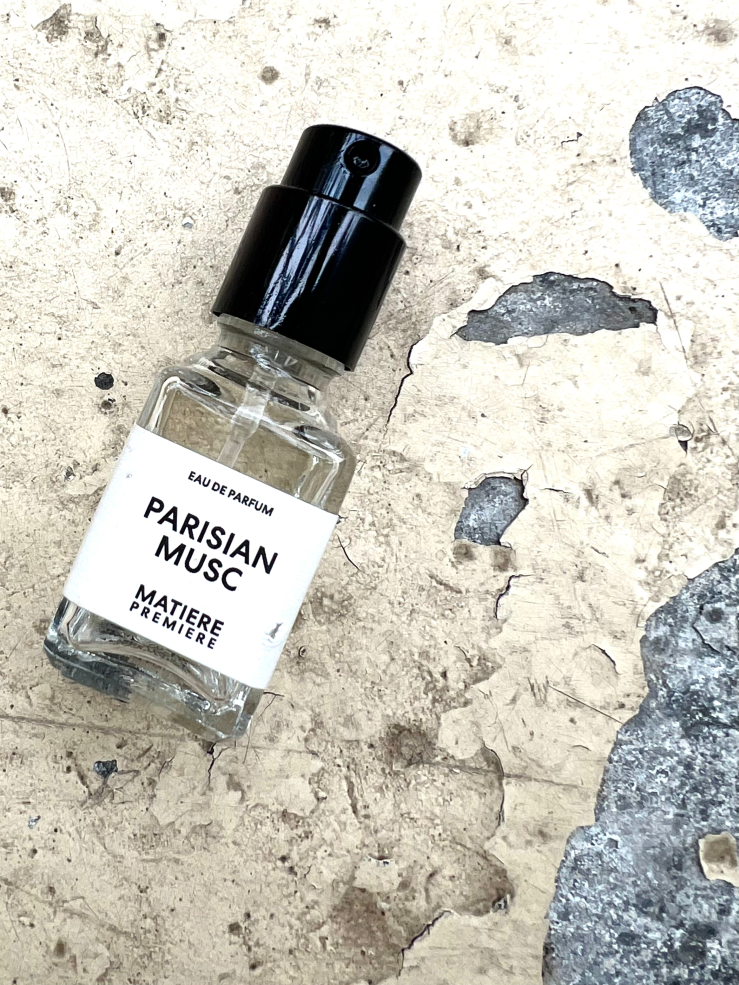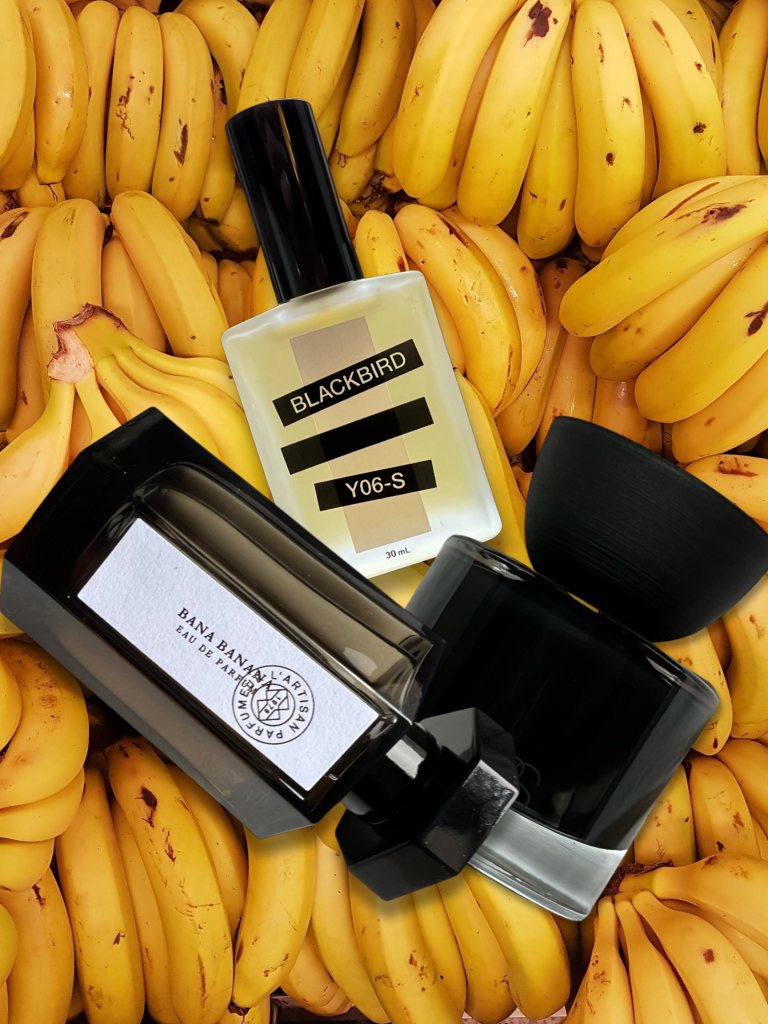I, like many who share this strange passion, basically live in a perfume shop decorated by hoarders. Perfume boxes are stacked Jenga-like on any flat surface, including the floor. Drawers overflow with samples, decants, and other fragrance ephemera and effluvia. Efforts to stay organized fail when another bottle gets added to the collection — already too much perfume for any one person to ever use in a lifetime.
Just like I will eat almost anything, I will wear almost anything as long as it is “good” and done with “heart.” My collection is a reflection of that: a smorgasbord of scent. I’m regularly stymied by sales assistants who ask me, “What do you like?” as if I only have three bottles and they all smell the same. “Everything,” I usually sigh and then move on since a collection like mine is not always conceivable to an SA accustomed to helping someone who can keep all of their perfumes on one bathroom tray.
(Side note: if you keep your poor fragrances in the bathroom where temperatures and humidity vary wildly, we cannot be friends.)
When I think about a “cornucopia,” a horn of plenty overflowing with pumpkin spice and everything nice, comes to mind. It’s American Thanksgiving with its crazy riot of savory and sweet flavors. It’s Rabelaisian excess made in the USA. Gargantua with a cowboy hat, seated behind a table groaning with heaps of meat flavored with sugar, spices, honey, fruits, vinegar, and topped with industrial marshmallows.
That’s basically my collection in a nutshell (or a goat’s horn to follow the analogy).
The wild thing is (as if an overgrown collection like mine is not already wild), despite having so much choice, I often struggle to choose a fragrance to wear. Lately, I have noticed that I walk out the door without wearing anything besides clothes and shoes. Partly this is because I know that, living in New York, I will inevitably come across perfumes throughout my day to spray and test out, but mostly it’s because I’m overwhelmed.
Or at least I thought I was until I was separated from my collection.
I recently returned from Paris, where I spent three weeks teaching and one week vacationing. Leaving New York was hectic. First of all, final grades for all my spring classes needed to be calculated and submitted before departure (a herculean task at the end of every term, but this spring, faculty only had four days to grade hundreds of pages, watch hours of video presentations, and fill out rubric after rubric). Then there was a leak from the apartment above mine which showered all the clothes in my closet with waste water, leaving me with nothing to wear in Paris except for whatever was in the laundry hamper. I finished packing minutes before getting in a cab to go to the airport, realizing as I was locking up that I had not packed any perfume. As I had no time to sit and contemplate what to bring, I just ran back inside and grabbed the first thing on my desk: a sample of BDK Crème de Cuir.
“It’s fine,” I thought to myself as I settled into my airline seat, mentally inventorying the contents of my checked luggage to figure out if I had forgotten anything else, “I’m heading to Paris. Surely I will pick up something!“
Then it didn’t happen. From the minute we landed to the date of our departure, each day was supercharged. Mornings were spent doing cultural activities “on-site.” Afternoons were spent cramming a semester’s worth of material into three short weeks. Evenings were dedicated to planning the next day’s trip/lesson and grading. The first weekend I spent doing laundry and buying clothes since I didn’t have much with me to wear. The second weekend was spent booking tickets and making reservations. The third weekend, grading and preparing for the students’ departure. The number of perfume shops I made it to? One.
And my sample of Crème de Cuir? Busted sprayer. I managed to crush out a glorious dab of fragrance before giving up in frustration.
But that doesn’t mean that I was completely without perfume. At the end of our first week, I met up with Emmanuelle Varron, one of my Perfume Playdate partners-in-crime, in person for the first time. Glamorous angel that she is, she left me with a fine collection of samples and decants of fragrances that I had not smelled before. The cornucopia was back! Endless choice was literally at my fingertips once more.
And yet …
Again, I felt overwhelmed. My days were busy enough as it was without another “serious,” “complex” scent competing for my limited attention. I wanted to smell good, but I also wanted to not think about my fragrance too much. Part of me also felt that it was somewhat disrespectful to wear something considered to be a masterpiece, only to run to the dry cleaners before they closed. Although part of me felt like I should try something different every day because I could again, I ended up reaching for the same fragrance day after day until I drained it.
Parisian Musk by Matière Première is the antithesis of a cornucopia. Built around Peruvian ambrette seed, it’s a straightforward, classy, clean musk fragrance that is easy to like and easy to wear. It is unobtrusive and unobjectionable, but that doesn’t mean that it is boring. Ambrette seed’s musky facets are amplified by Ambrettolide Suprême, a relatively new synthetic musk that no longer relies on insects for its manufacture like regular old isoambrettolide does. The primary raw material’s woody facets are attenuated with Virginian Cedar, which helps to snap the fragrance into focus by adding a crisp elegance that wears like a freshly laundered and starched shirt. Ambroxan pulls these two poles together, giving a rounded depth to the composition and adding a slightly saline element reminiscent of salty skin. The final product is polished with the scent of unripe figs, as if you ran your fingers over their powdery bloom, releasing a scent that is twiggy, green, and somewhat milky.
As you know by now, Scent Semantics is a monthly perfume blogger collaboration curated by Portia Turbo to bring together six writers from around the world to meditate on a single word, and then write about a fragrance(s) they’ve chosen to represent it.
I’m catching up on several months of Scent Semantics words, so these posts are out of order. I do encourage you to go back and read everyone else’s takes on this previous months!
Please visit their blogs and subscribe to support (links in the navigation and below).
- Elena, The Plum Girl https://theplumgirl.com
- Sheila, The Alembicated Genie https://thealembicatedgenie.com
- Undina, Undina’s Looking Glass https://undina.com
- Old Herbaceous, Serenity Now Scents & Sensibilities https://scentsandsensibilities.co
- Portia, A Bottled Rose https://abottledrose.com












